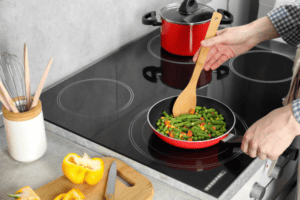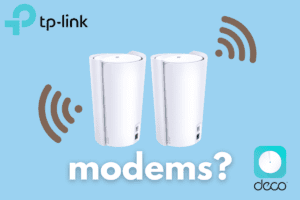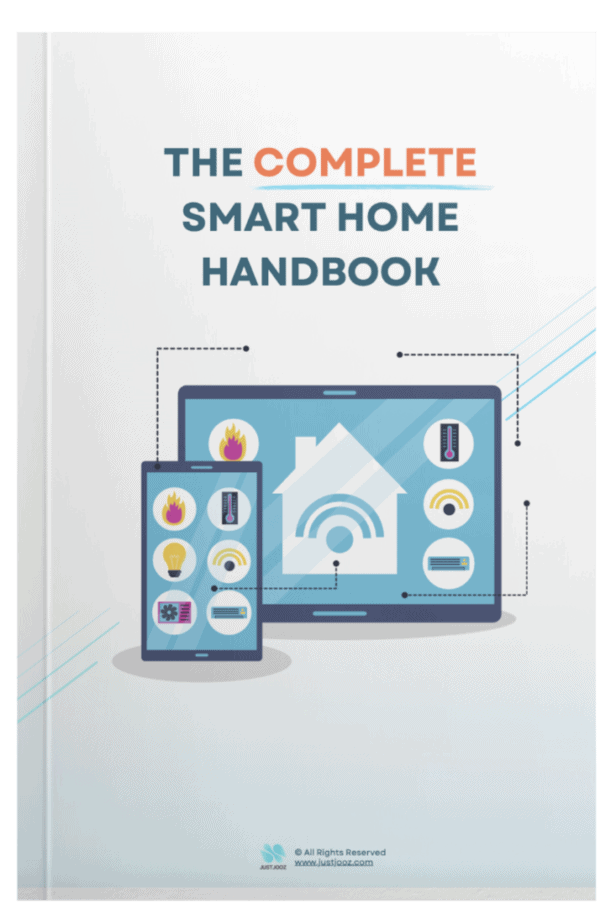10 Smart Home Automation Ideas
We’re reader-supported; we may earn a commission from links in this article.
Smart home automation has revolutionized our lives, allowing us to control and manage various aspects of our homes with a tap or a voice command.
From saving time and energy to enhancing security and convenience, these technological advancements are changing how we interact with our living spaces.
Let’s explore ten ingenious smart home automation ideas that will make your life easier and bring a touch of futuristic luxury to your everyday routines.
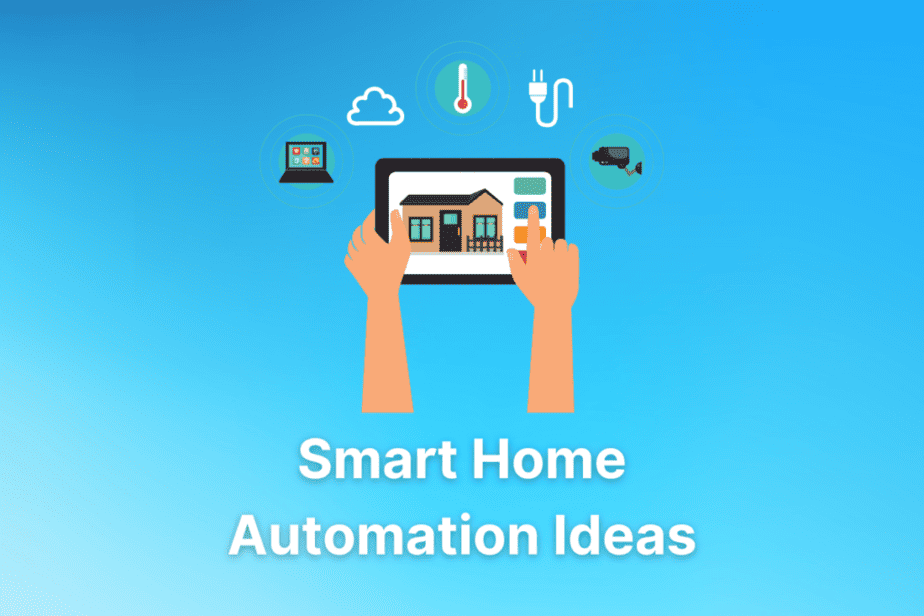
1. Smart Kitchen Appliances to Simplify Cooking
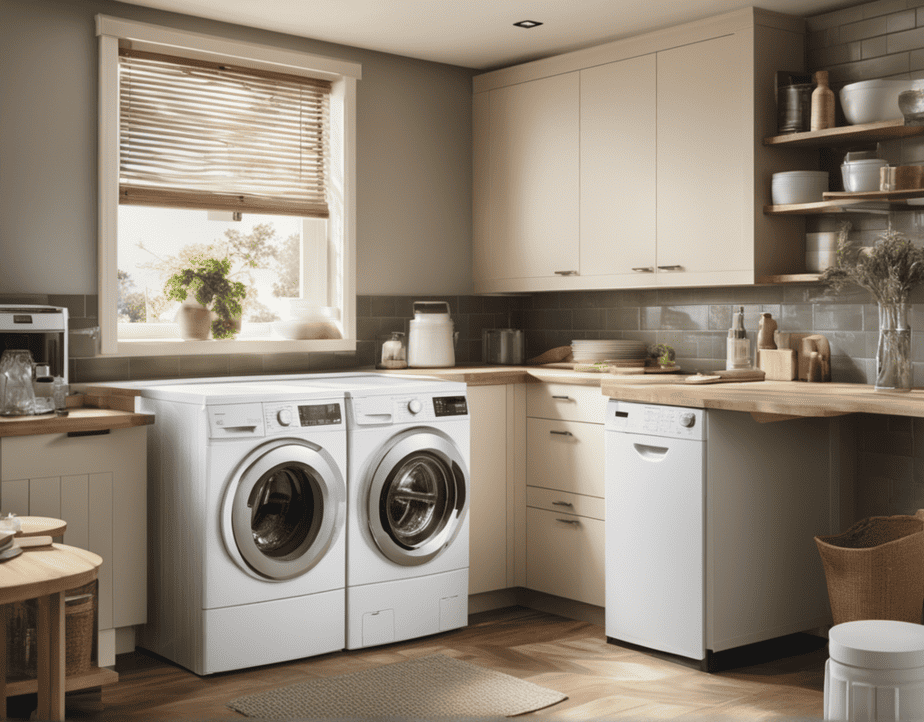
Cooking can become a breeze with the help of smart kitchen appliances.
From Wi-Fi-enabled ovens that let you preheat remotely to smart refrigerators that keep track of your groceries and suggest recipes based on what you have, these appliances take the guesswork out of meal preparation.
Receive step-by-step cooking instructions on your smartphone and enjoy delicious meals without the stress of traditional cooking methods.
Smart kitchen appliances are designed to simplify and enhance your cooking experience through advanced technology and connectivity.
Even if kitchen appliances aren’t natively smart from smart home technology, they can be made smart using a smart switch or smart plug, which will allow it to be remotely turned off via WiFi on your smart phone.
Here are some ways they can help simplify cooking:
a. Remote Control
Smart appliances can be controlled remotely using your smartphone or other smart devices. This allows you to start, stop, adjust settings, and monitor cooking progress even when not in the kitchen.
b. Precise Cooking
Many smart appliances have built-in sensors and algorithms that help you cook dishes precisely. Whether it’s a smart oven, sous-vide cooker, or precision cooker, these appliances ensure consistent and accurate results.
c. Recipe Guidance
Some smart appliances have recipe databases and interactive screens that guide you through cooking steps. They provide detailed instructions, ingredient measurements, and video tutorials for various dishes.
d. Timers and Alerts
Smart appliances can send notifications and alerts when your food is ready or when a specific cooking phase is complete. This prevents overcooking or forgetting about your meal.
2. Voice-activated Smart Lights for Instant Ambiance
Tired of stumbling around in the dark? You can create the perfect ambiance with voice-activated lights without lifting a finger.
Using devices like Amazon Echo or Google Home, you can command your lights to adjust their brightness or color to suit your mood. It’s like having a personal lighting assistant that responds to your every whim.
Smart thermostats are another hallmark of modern smart homes. These devices intelligently regulate indoor temperatures, learning from user habits to optimize comfort and energy consumption.
With the rise of smart home platforms like HomeKit and other similar ecosystems, homeowners can seamlessly control various aspects of their living space using a single interface. This convergence of technologies has paved the way for a cohesive and interconnected smart home experience.
3. Smart Thermostats that Adapt to Your Comfort
Gone are the days of manually adjusting thermostats!
Smart thermostats learn your temperature preferences and daily routines, ensuring your home is always at the perfect temperature.
These can even detect when you’re away and adjust the heating and cooling systems accordingly, saving you energy and money.
a. Adaptive Learning Algorithms
Modern thermostats can employ adaptive learning algorithms that analyze your daily routines and preferences.
These algorithms use data collected from your interactions with the thermostat to predict when you’ll be home, when you’ll be asleep, and when you’ll be away.
Over time, a smart thermostat learns your preferences and adjusts the temperature accordingly, ensuring your comfort without manual input.
b. Geo-Fencing Technology
Geo-fencing technology takes advantage of your smartphone’s GPS to determine your proximity to your home.
Thermostats equipped with this technology can automatically detect when you’re approaching home and adjust the temperature to your preferred setting. This means you’ll step into a cozy environment without touching the thermostat.
c. Weather Integration
Imagine a thermostat that not only responds to your preferences but also considers the current weather conditions.
Integrating with weather forecasts, your thermostat can make proactive adjustments to maintain a comfortable indoor temperature, factoring in factors like humidity, wind chill, and temperature changes.
d. Occupancy Sensors
Thermostats equipped with occupancy sensors can detect whether a room is in use. If a room is empty, the thermostat can adjust the temperature slightly to conserve energy.
Once the sensors detect movement, they’ll readjust to your preferred comfort level. This is particularly useful for rooms that are less frequently used.
e. Voice Control and Integration
Voice-controlled smart assistants like Amazon Alexa or Google Assistant can now interact with your thermostat.
This means you can speak a command to adjust the temperature. Additionally, integration with other smart devices like smart blinds or fans allows for a holistic approach to maintaining a comfortable environment.
4. Smart Plugs: Power Management Made Effortless
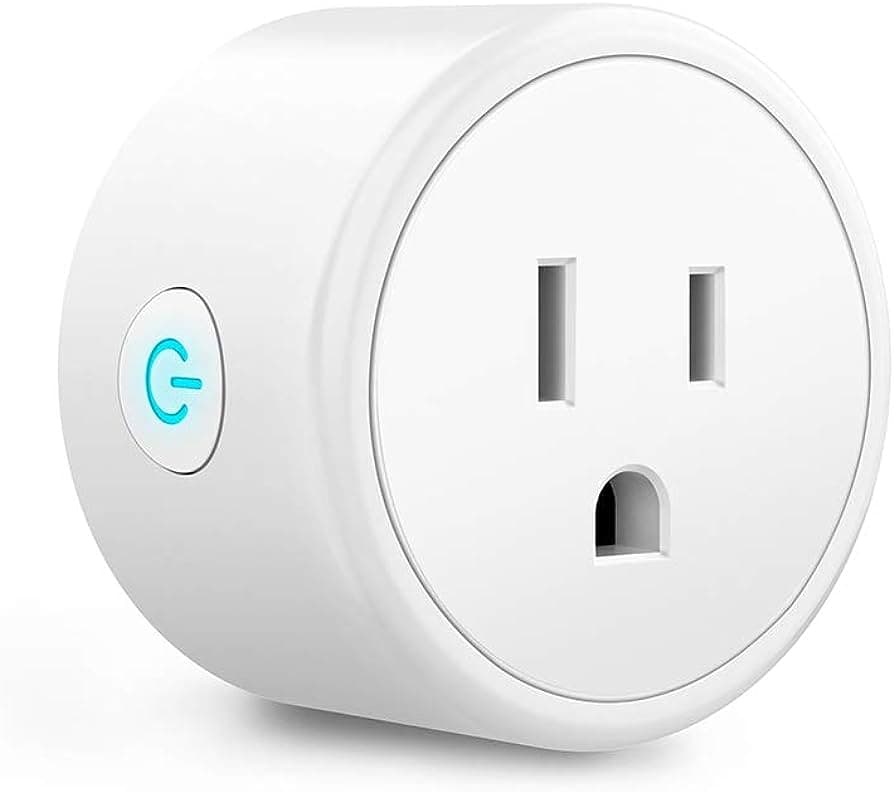
Ever left the house wondering if you left your appliances on?
With smart plugs, you can remotely control and monitor your devices from your smartphone. Turn off that iron you forgot about or schedule your coffee maker to start brewing before you even leave bed.
a. Seamless Remote Control
Smart plugs allow you to control your devices’ power supply remotely. You can turn devices on or off from anywhere through a smartphone app, ensuring you never have to worry about leaving appliances running when you’re not home.
b. Energy Monitoring and Efficiency
Many smart plugs come equipped with energy-monitoring features. A smart plug can provide real-time data on how much energy each connected device is consuming. With this information at your fingertips, you can identify energy-hungry devices and adjust your usage patterns to conserve electricity.
c. Scheduled Automation
Imagine having your coffee maker start brewing every morning before you even step out of bed. Smart plugs allow you to create schedules for your devices, automating their operation based on your routine. This ensures that devices are only active when needed, reducing unnecessary energy consumption.
d. Voice Commands and Integration
Smart plugs often integrate seamlessly with voice-controlled assistants like Amazon Alexa, Google Assistant, or Apple Siri. This means you can control your devices using voice commands, making tasks as simple as saying, “Turn off the lights” or “Start the fan.”
5. Automated Window Blinds for Natural Lighting Control
Harness the power of natural light with automated window blinds. These blinds can adjust themselves based on the time of day, maximizing sunlight and reducing the need for artificial lighting. You can even set schedules to wake up to gently filtered sunlight or create a cozy atmosphere for movie nights.
a. Adaptive Lighting Scenarios
Imagine waking up to gently filtered sunlight as your automated blinds gradually open in the morning. With sensors that detect the intensity of natural light, your window blinds can adjust throughout the day to maintain an optimal illumination level, reducing the need for artificial lighting.
b. Time-Based Control
Program your automated blinds to follow a schedule that aligns with your daily routine. This can include automatically raising the blinds in the morning to let in sunlight and lowering them in the evening for privacy and energy conservation.
c. Voice-Activated Blinds
Integrate your automated window blinds with voice-controlled assistants like Amazon Alexa or Google Assistant. This allows you to effortlessly command the blinds to open, close, or adjust their position with simple voice commands.
d. Energy-Efficient Modes
Smart window blinds can be configured to respond to changing weather conditions. During hot summer days, for example, the blinds can automatically close to block out excessive heat and reduce cooling needs. In colder months, they can open to harness natural warmth from the sun.
e. Occupancy Sensors Integration
Link your window blinds to occupancy sensors to create an efficient synergy. The blinds can close to prevent unnecessary heat gain or loss when a room is unoccupied. Upon detecting movement, they can open again to welcome inhabitants with natural light.
6. Home Security Systems with AI Monitoring
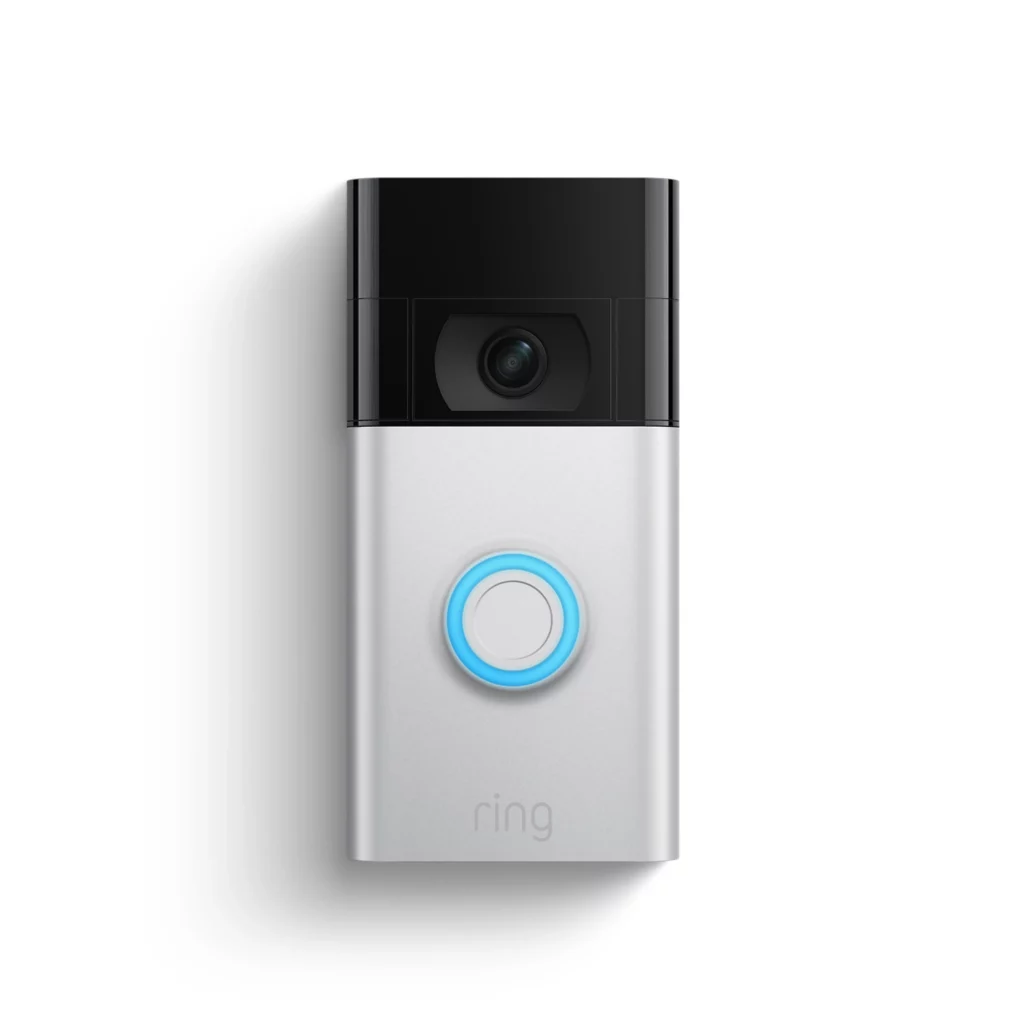
Protecting your home is easier than ever with smart security systems.
Your front door can be securely closed everytime you close it and securely opened everytime only you approach it.
Equipped with AI technology, these systems can differentiate between regular movements and potential threats, sending you instant alerts when necessary. Rest easy knowing your home is being monitored around the clock.
Smart locks now work in tandem with smart doorbells via smart home technology to process the images and determine who’s at the door.
Here are some ways that this happens in smart homes:
a. Intelligent Intrusion Detection
Implement AI algorithms that analyze video feeds from security cameras to distinguish between normal activities and potential threats. The system can learn to identify patterns and anomalies, sending alerts only when suspicious behavior is detected and reducing false alarms.
b. Facial Recognition Access Control
Combine facial recognition technology with your security system to allow authorized individuals easy access to your home. AI can learn to recognize the faces of family members and trusted guests, granting them entry while notifying you of unfamiliar faces.
c. Activity Pattern Learning
Over time, AI can learn the typical activity patterns in your home. It can recognize when doors are typically opened and closed, when lights are turned on or off, and more. Any deviations from these patterns can trigger alerts, helping you detect potential intrusions or emergencies.
d. Smart Doorbell Integration
AI-powered doorbell cameras can distinguish between people, animals, and objects, notifying you only when a person approaches. Additionally, the system can identify and greet known faces by name, providing a personalized touch to your home security.
The smart lock can then talk to the smart doorbell to restrict access or warn of strangers at the door.
7. Smart Door Locks for Added Safety and Convenience
Say goodbye to fumbling for your keys. Smart door locks allow you to unlock your door with your smartphone or a keypad, adding an extra layer of security. You can also grant temporary access to guests or service providers remotely, ensuring you’re always in control.
Garage doors have also entered the realm of smart home automations, which can open and close remotely via smartphone apps.
Motion sensors are great for automating the closing and opening of your garage door, but you’ll need to compromise a little on security.
a. Keyless Entry and Touchless Access
Smart door locks enable keyless entry, allowing you to unlock your door using a smartphone app or a personalized access code. Some advanced models also offer touchless access through features like fingerprint recognition or Bluetooth proximity detection.
b. Temporary Access Codes
Generate temporary access codes for guests, service providers, or Airbnb guests. You can set expiration dates and times for these codes, ensuring that access is granted only when needed.
c. Remote Locking and Unlocking
With remote access capabilities, you can automatically lock or unlock your door from anywhere using your smartphone. This is particularly convenient for letting in family members, friends, or delivery personnel when you’re not at home.
d. Geofencing Automation
Integrate your smart door lock with geofencing technology. As you approach your home, the lock can automatically unlock, providing a hands-free and convenient entry experience.
e. Voice Control Integration
Smart door locks can be integrated with voice-controlled assistants like Amazon Alexa or Google Assistant. You can command your lock to unlock or lock using simple voice commands.
f. Activity Monitoring and Alerts
Receive notifications on your smartphone whenever the door is unlocked or locked. This feature lets you stay informed about who enters or leaves your home, enhancing security.
Handy home automation ideas continue to emerge, catering to specific needs. Smart locks, for instance, provide enhanced security by allowing remote monitoring and access control.
Homeowners can rest assured that their abode is well-protected, even when they’re away.
Furthermore, smart lighting automation ideas have taken center stage, offering features like motion sensors that trigger lights to turn on and off based on movement. This adds an element of convenience and contributes to energy efficiency.
8. Entertainment Centers at Your Fingertips
Transform your living room into a high-tech entertainment hub with smart TVs and streaming devices. With voice commands or smartphone apps, you can seamlessly switch between your favorite shows, movies, and music without searching for remote controls.
a. Unified Remote Control
Consolidate control of your entertainment devices with a single smart remote. You can navigate through different media seamlessly by integrating your TV, streaming devices, sound system, and more.
b. Voice-Controlled Entertainment
Utilize voice-controlled assistants on a smart speaker like Amazon Alexa or Google Assistant to control your entertainment center.
You can command your TV to switch channels, adjust volume, play movies, or even search for content using voice commands.
c. Customizable Lighting and Ambiance
Integrate smart lighting solutions with your entertainment center. Create lighting scenes that match the mood of what you’re watching—whether it’s a cozy movie night or an exciting sports event.
d. Content Streaming and Casting
Set up a media hub that supports content streaming from various platforms. You can also easily cast media from your mobile devices to the big screen.
e. Personalized Viewing Profiles
Create individual viewing profiles for each family member. These profiles can store preferences, favorite shows, and recommended content, offering a tailored viewing experience.
9. Efficient Watering with Smart Sprinkler Systems
Maintaining a lush garden is effortless with smart sprinkler systems.
These systems adjust watering schedules based on weather conditions, preventing overwatering and conserving water. You can control them remotely, so your garden stays green even when you’re away.
a. Weather-Based Irrigation
Implement smart sprinklers that consider real-time weather data. These systems can adjust watering schedules based on current weather conditions, preventing overwatering during rainy periods and ensuring optimal hydration during dry spells.
b. Soil Moisture Sensors
Integrate soil moisture sensors into your smart sprinkler system.
These smart sensors measure the moisture level in the soil and provide data to the system, enabling it to water only when necessary. This prevents water waste and helps maintain healthy plant growth.
c. Customized Zone Settings
Divide your lawn and garden into different zones based on plant types, sun exposure, and soil types. Smart sprinkler systems allow you to set customized watering schedules and durations for each zone, ensuring tailored care for each area.
d. Remote Monitoring and Control
Use a smartphone app to remotely monitor and control your smart sprinkler system.
This feature allows you to adjust watering schedules, turn the system on or off, and make changes from anywhere, ensuring your lawn receives the right amount of water even when you’re away.
10. Personalized Wake-Up Calls with Smart Alarms
Rise and shine to a personalized wake-up call. Smart alarms simulate natural sunlight and gradually increase in intensity, mimicking the sunrise. Wake up feeling refreshed and energized, ready to tackle the day ahead.
a. Gradual Sunrise Simulation
Create a wake-up experience that mimics a natural sunrise. Smart alarms can gradually increase the intensity of light in your bedroom, simulating the rising sun and gently waking you up without the abruptness of traditional alarms.
b. Customized Wake-Up Soundscapes
Choose from various soothing sounds or calming music to wake you up. You can even set different soundscapes for different days of the week, aligning with your mood and schedule.
c. Personalized Wake-Up Messages
Program your smart alarm to deliver personalized wake-up messages. Whether it’s a motivating quote, a positive affirmation, or a funny greeting, these messages can set a positive tone for the day ahead.
d. Integration with Natural Language Processing
Some smart alarms can process natural language commands. You can set wake-up calls by telling the alarm when you want to wake up and the type of sounds or messages you prefer.
Conclusion
Embracing smart home automation isn’t just about convenience; it’s about enhancing your lifestyle.
From simplifying everyday tasks to adding an extra layer of security, these ideas have the potential to make your life more comfortable, efficient, and enjoyable.
Investing in smart home gear, such as smart plugs, opens up opportunities for controlling non-smart devices remotely. This versatility adds a layer of convenience, as appliances and gadgets can be managed effortlessly.
FAQs
Q: Are smart home automation systems compatible with different devices?
Absolutely! Most smart home devices are designed to be compatible with various platforms and devices, ensuring seamless integration. The home automation system that I use is the Google Assistant via the Google Nest Hub.
Q: Can I control smart home devices when I’m not at home?
Yes, many smart home devices can be controlled remotely through dedicated apps on your smartphone, as long as you have an internet connection.
Q: Are smart home devices secure from hacking or unauthorized access?
Manufacturers implement security measures to protect devices from hacking, but it’s essential to follow best practices such as using strong passwords and regularly updating firmware.
Q: Do smart home automation systems consume a lot of energy?
Most smart devices are designed to be energy-efficient, and some, like smart thermostats, can even help you save energy by optimizing usage.
Q: Can I customize the settings of my smart home automation devices?
Absolutely! Smart home devices often come with customizable settings that allow you to tailor their behavior to your preferences and routines.

Justin Chia
Justin is the author of Justjooz and is a data analyst and AI expert. He is also a Nanyang Technological University (NTU) alumni, majoring in Biological Sciences.
He regularly posts AI and analytics content on LinkedIn, and writes a weekly newsletter, The Juicer, on AI, analytics, tech, and personal development.
To unwind, Justin enjoys gaming and reading.


